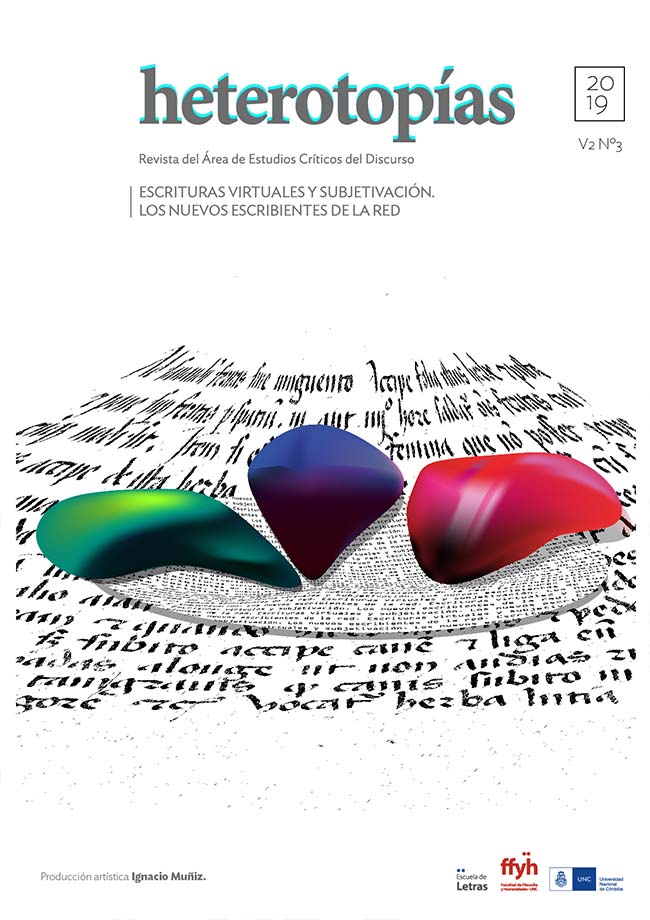Being and memory by Pierre levy, University of Montreal
Main Article Content
Abstract
The first challenge of this article is to relocate the object of the human sciences (culture and symbolic significance) in continuity with the objects of the natural sciences. I hypothesize that the meaning does not appear suddenly in humanity, but that different layers of coding and memory (quantum, atomic, genetic, nervous and symbolic) accumulate and become progressively more complex, with the symbolic layer being the most recent the "writing machines".
The second challenge of the text is to define the specificity and unity of the symbolic layer and, therefore, the field of human sciences. In contrast to a certain logocentric tradition, I propose that symbolism, while obviously including language, also encompasses other semiotics (such as cuisine or music) where the meaning / meaning rupture is not as relevant as for languages. The third challenge of this essay is to show that cultural forms and the interpretative faculties of humanity evolve with their writing machines. The emergence of digital, in particular, suggests a refinement of the human sciences and reaches the calculation of semantic complexity. This attempt to redefine the human sciences in continuity with the natural sciences presupposes an ontology, or a metaontology, in the words of Marcello Vitali-Rosati, for whom the notions of writing and memory are fundamental and which, in rupture with Kantian criticism, accept the full reality of spatiality and natural temporality.
Downloads
Article Details
Those authors who have publications with this journal, accept the following terms: Those authors who have publications with this journal, accept the following terms:
a. The authors will keep their copyright and guarantee to the journal the right of first publication of their work, which will be simultaneously subject to the Creative Commons Attribution - Non-Commercial - Share Alike (by-nc-sa) Attribution License; no commercial use of the original work or any derivative works is allowed, the distribution of which must be done with a license equal to the one that regulates the original work.
b. Authors may adopt other non-exclusive license agreements for the distribution of the published version of the work (e.g., deposit it in an institutional telematic archive or publish it in a monographic volume) provided that the initial publication in this journal is indicated.
c. Authors are allowed and recommended to disseminate their work through the Internet (e.g. in institutional telematic archives or on their website) before and during the submission process, which may lead to interesting exchanges and increase the number of citations of the published work. (See The effect of open access).
How to Cite
References
Augustin, d’Hippone. La Cité de Dieu. La Pléiade. Paris: Gallimard, 2000.
———. Les Confessions. Paris: Garnier-Flammarion, 1993.
Austin, John, Langshow. How to Do Things With Words. Oxford: Oxford UP, 1962.
Bergson, Henri. Matière et Mémoire. Paris: Félix Alcan, 1896.
Berkeley, George. Trois Dialogues Entre Hylas et Philonous. Fammarion, 2001.
Bon, François. Entrailles des animaux (de l’écriture et de la lecture qui fut le premier?). Tel Aviv, 2018. https://www.youtube.com/watch?v=XjDFI1e8jlw.
Deleuze, Gilles, and Félix Guattari. L’anti-Oedipe. Paris: Minuit, 1972.
———. Mille Plateaux. Paris: Minuit, 1980.
Derrida, Jacques. De la grammatologie. Paris: Minuit, 1967.
———. La Dissémination. Paris: Seuil, 1972.
———. La voix et le phénomène. Paris: PUF, 1967.
———. L’écriture et la différence. Paris: Seuil, 1967.
Descartes, René. Méditations métaphysiques. Flammarion, 2009.
Guattari, Félix. Chaosmose. Paris: Galilée, 1992.
Hegel, GWF. Phénoménologie de l’esprit. Traduction Jean Hyppolite. Paris: Aubier, 1941.
Heidegger, Martin. Chemins Qui Ne Mènent Nulle Part. Paris: Gallimard, 1962.
Kafka, Franz. La colonie pénitentiaire et autres récits. Paris: Gallimard, 1948.
Kant, Emmanuel. Critique de la raison pure. Paris: Flammarion, 2001.
Lévy, Pierre. “La pyramide algorithmique.” Sens Public, no. Ontologies du numérique (2017): 29.
———. La Sphère Sémantique. Computation, Cognition, Économie de l’information. Paris-London: Hermès-Lavoisier, 2011.
———. L’Intelligence collective. Pour une anthropologie du cyberespace. Paris: La Découverte, 1994.
———. Qu’est-ce que le virtuel? Paris: La Découverte, 1995.
Marcus, Gary. “Why Robot Brains Need Symbols.” Nautilus, December 6, 2018. http://nautil.us/issue/67/reboot/why-robot-brains-need-symbols.
Mauss, Marcel. Sociologie et Anthropologie. PUF, 1950.
Meillassoux, Quentin. Après la finitude. Essai sur la nécessité de la contingence. Paris: Seuil, 2006.
Nietzsche, Friedrich. Ainsi parlait Zarathoustra. Paris: Le livre de poche, 1972.
———. Aurore. Folio, 1989.
———. Le Gai Savoir. Flammarion, 2007.
Quintilien, Trad. Jean Cousin. De l’institution Oratoire. Vol. 1 à 6. Paris: Les Belles Lettres, 1976.
Rastier, François. Sémantique Interprétative. Paris: PUF, 1987.
Saussure de, Ferdinand. Cours de Linguistique Générale. Lausanne / Paris: Payot, 1916.
Searle, John. Speech Acts. Cambridge: Cambridge UP, 1969.
Serres, Michel. Hermès I. La Communication. Paris: Minuit, 1969.
———. Hermès III. La Traduction. Paris: Minuit, 1974.
———. Hermès IV. La Distribution. Paris: Minuit, 1977.
———. Hermès V. Le Passage Du Nord-Ouest. Paris: Minuit, 1980.
———. Le Parasite. Paris: Grasset, 1980.
———. Le Système de Leibniz et Ses Modèles Mathématiques. Paris: PUF, 1968.
Vitali-Rosati, Marcello. “Mais où est passé le réel: profils, représentations et métaontologie.” Muse Medusa, no. 6 (2018). http://musemedusa.com/dossier_6/vitali-rosati/.
———. On Editorialization: Structuring Space and Authority in the Digital Age. Amsterdam: Institute of Networked Cultures, 2018.
———. “Pour une pensée préhumaine.” BlogPost. Culture numérique (blog), October 28, 2018. http://blog.sens-public.org/marcellovitalirosati/pour-une-pensee-prehumaine/.
Wittgenstein, Ludwig. Recherches philosophiques. Paris: Gallimard, 2014.
———. Tractatus Logico-philosophicus. Paris: Gallimard, 2001.
